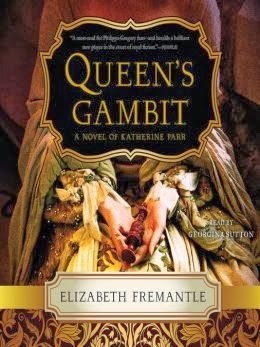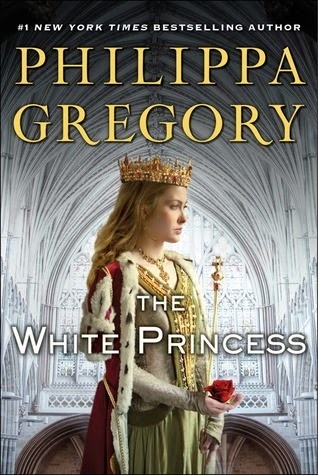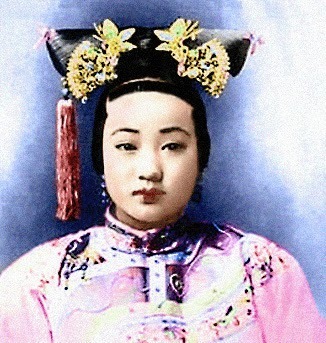Mirella Sichirollo Patzer's Blog, page 25
February 11, 2014
Blog Tour - Between the Cracks - A Novel by Carmela Cattuti


Publication Date: August 20, 2013
Three Towers Press/HenschelHAUS Publishing, Inc.
Paperback; 324p
ISBN-10: 1595982396
Join Angela Lanza as she experiences the tumultuous world of early 20th century Sicily and New York. Orphaned by the earthquake and powerful eruption of Mr. Etna in 1908, Angela is raised in the strict confines of an Italian convent. Through various twists of fate, she is married to a young Italian man whom she barely knows, then together with her spouse, immigrates to the U.S. This novel is an invitation to accompany the young Angela as she confronts the ephemeral nature of life on this planet and navigates the wide cultural gaps between pre-World War II Italy and the booming prosperity of dynamic young America. Join Angela Lanza as she traverses the tumultuous landscape of Sicily and New York.
My Review
I am always fascinated with novels about women who have left their lifelong homes and families to follow husbands to North America to start a new life. My mother was one of those women, having crossed alone to join her husband in Canada. One cannot imagine the heartache of leaving the security of parents and siblings and extended family and live relatively alone. In Between the Cracks, we are given insight into the plight of a young girl named Angela Lana, the author's aunt, who was orphaned by the December 1908 earthquake that struck Messina on the island of Sicily and Reggio Calabria Italy. 123,000 lives were lost that day, including Angela's entire family.

Angela searches for her sister, but cannot find her. She is taken in by the nuns in a local convent who raise her until she comes of age.

That's when a handsome young Italian American man returns to Sicily to find himself a wife. The moment he sees Angela, he is certain she is the woman for him. With Angela's consent and the approval of the Mother Superior, the wedding takes place and soon Angela finds herself crossing the ocean to a new life with all the struggles and joy that it entails.
This novel was an easy read, but full of poignant emotion, struggles, and simple joys. The author has captured the life of the Italian immigrant with vibrant accuracy. Angela is a compelling character. For her, life is not easy, but Angela embraces her new family and her new life, willing to work hard and succeed. Her search for her sister continues as a theme throughout the story and they return to Sicily years after to look for her once more. And then there are secondary characters like her loving hard-working husband, her misguided mother-in-law, her darling step-daughter, all with their faults and idiosyncracies.
I loved this book. It was enjoyable, multi-layered, and heart-wrenching. The scenes of the earthquake's aftermath were vividly described, bringing to life the devastation and feelings of loss. I highly recommend this book! Especialy if you have Italian roots. Unputdownable!
Purchase the BookAmazonBarnes & NobleBook Depository

About the AuthorCarmela Cattuti started her writing career as a journalist for the Somerville News in Boston, MA. After she finished her graduate work in English Literature from Boston College she began to write creatively and taught a journal writing course at the Cambridge Center for Adult Education As fate would have it, she felt compelled to write her great aunt’s story. “Between the Cracks” has gone through several incarnations and will now become a trilogy. This is the first installment. To connect with Carmela email hercattutic@gmail.com or leave a comment at betweenthecracksnovel.blogspot.com.
For more information please visit Carmela's website. You can also connect with her on Facebook, Twitter, and Pinterest. Visit the Between the Cracks Facebook page.
Follow the TourMonday, February 10Review at Oh, for the Hook of a BookGiveaway at Passages to the Past
Tuesday, February 11Review at Kinx’s Book NookSpotlight & Giveaway at So Many Precious Books, So Little Time
Wednesday, February 12Review at History and WomenGuest Post & Giveaway at Historical Fiction Connection
Thursday, February 13Guest Post at Broken Teepee
Friday, February 14Review at Just One More Chapter









Published on February 11, 2014 23:27
February 1, 2014
February Book Club Choice - The Scarlet Contessa by Jeanne Kalogridis
Join us as we are reading The Scarlet Contessa by Jeanne Kalogridis this month. Come and learn about an unforgettable, strong warrior woman named Caterina Sforza!

What Philippa Gregory has done for Tudor England, Jeanne Kalogridis does for Renaissance Italy. Her latest irresistible historical novel is about a countess whose passion and willfulness knew no bounds—Caterina Sforza
Daughter of the Duke of Milan and wife of the conniving Count Girolamo Riario, Caterina Sforza was the bravest warrior Renaissance Italy ever knew. She ruled her own lands, fought her own battles, and openly took lovers whenever she pleased.
Her remarkable tale is told by her lady-in-waiting, Dea, a woman knowledgeable in reading the “triumph cards,” the predecessor of modern-day Tarot. As Dea tries to unravel the truth about her husband’s murder, Caterina single-handedly holds off invaders who would steal her title and lands. However, Dea’s reading of the cards reveals that Caterina cannot withstand a third and final invader—none other than Cesare Borgia, son of the corrupt Pope Alexander VI, who has an old score to settle with Caterina. Trapped inside the Fortress at Ravaldino as Borgia’s cannons pound the walls, Dea reviews Caterina’s scandalous past and struggles to understand their joint destiny, while Caterina valiantly tries to fight off Borgia’s unconquerable army.










What Philippa Gregory has done for Tudor England, Jeanne Kalogridis does for Renaissance Italy. Her latest irresistible historical novel is about a countess whose passion and willfulness knew no bounds—Caterina Sforza
Daughter of the Duke of Milan and wife of the conniving Count Girolamo Riario, Caterina Sforza was the bravest warrior Renaissance Italy ever knew. She ruled her own lands, fought her own battles, and openly took lovers whenever she pleased.
Her remarkable tale is told by her lady-in-waiting, Dea, a woman knowledgeable in reading the “triumph cards,” the predecessor of modern-day Tarot. As Dea tries to unravel the truth about her husband’s murder, Caterina single-handedly holds off invaders who would steal her title and lands. However, Dea’s reading of the cards reveals that Caterina cannot withstand a third and final invader—none other than Cesare Borgia, son of the corrupt Pope Alexander VI, who has an old score to settle with Caterina. Trapped inside the Fortress at Ravaldino as Borgia’s cannons pound the walls, Dea reviews Caterina’s scandalous past and struggles to understand their joint destiny, while Caterina valiantly tries to fight off Borgia’s unconquerable army.









Published on February 01, 2014 11:47
January 21, 2014
The Only Woman Worth Dying For - Fanny Van de Grift Osbourne Stevenson - Under the Wide and Starry Sky by Nancy Horan

Frances (Fanny) Matilda Van de Grift Osbourne Stevenson (10 March 1840 —18 February 1914) was the great love of famous Scottish author Robert Louis Stevenson. But who was she and how did she manage to capture his heart, especially since she was much older and a married woman?
She was born in Indianapolis in 1840 to a middle class family. Her father was a builder, so they lived a comfortable life. Even at an early age, she was spirited and was considered a tomboy. When she met the handsome Lieutenant Samuel Osbourne, she fell in love and married him. She was only seventeen at the time. The happy couple soon celebrated the birth of a daughter they named Isobel whom they lovingly dubbed "Belle".
Samuel was rarely at home. First, he left to fight in the American Civil War. Then, he accompanied his sick friend to California. From there, he ended up in Nevada's silver mines. That's when he summoned Fanny. With 5 year old Isobel, Fanny traveled by wagon train and stagecoach to join her husband in the silver mining camps. Nothing could have prepared Fanny for the rough life of a mining town. Ever adaptable, Fanny learned to shoot and smoke as good as any man, rolling her own cigarettes, a most unfeminine art.
When Samuel grew tired of the mining camps, he moved his family to Virginia City in Nevada. That's when he started cavorting with saloon girls and prostitutes. Rumors of gold soon lured him to the mountains of Coeur d'Alene while Fanny packed up her daughter and went to San Francisco.
Alone once more, Fanny tried to earn a meager living. A rumour began circulating that her husband had been mauled and killed by a grizzly bear, so she took up the garb of a widow. But that proved to be only a rumour, for he showed up one day on her door step very much alive.
Fanny accepted him back into her life and she bore him a second child; a son they named Samuel after his father. For a while, they were happy, but then Sam senior began his womanizing again. Fanny left him made the trek across the country to return to Indianapolis.
Incredibly, he followed her there several years later and they reconciled. They moved to Oakland and Fanny bore him a second son they named Hervey. Fanny settled into family life and began painting. She developed a fondness for gardening too. Despite the appearance of a cozy family life, Samuel went back to his old philandering ways. Frustrated, she left him and took her children to Europe with the excuse of exposing Isobel and herself to the study of art. From Antwerp they moved to Paris. It was then that tragedy struck. Poor little Hervey became sick with tuburculosis and died. Engulfed in her grief, it was then she met a struggling author by the name of Robert Louis Stevenson.
 Robert Louis StevensonAlthough Robert came from a wealthy family, his family disapproved of his choice to become a writer, and gave him little money, barely enough to live off.
Robert Louis StevensonAlthough Robert came from a wealthy family, his family disapproved of his choice to become a writer, and gave him little money, barely enough to live off. Right from the start, Fanny encouraged him in his writing, inspiring him, They fell in love with each other, but when Fanny's estranged husband began making legal troubles for her, Fanny had to return to America. Robert wanted to follow her there, but his father refused to send him the funds. So Robert was forced to try to come up with the money himself. It took him three years to scrape up the funds.
Ignoring the protests of family and friends who disapproved of his relationship with a married woman, Robert departed for America, to California where a very heartbroken Fanny was recovering from depression over her marital problems. While Fanny struggled with the decision on whether to proceed with a divorce that would not go in her favour, Robert kept busy writing.

Finally, Fanny could no longer stand her miserable marriage. Her love for Robert was too strong. So she allowed divorce proceedings. She married Robert in May 1880, and they soon moved to the Napa Valley where the ever sickly Robert wrote about his difficult journey to America and other stories. Robert's decline in social standing resulted in further angering his father who blocked his published works.
In August 1880, Fanny insisted they move back to England, where she brought about a reconciliation between father and son. But with Robert's unhealthy lungs always in peril, they returned to the U.S. and later Samoa. It was there that Robert died just before Christmas in 1894. Always adventurous, Fanny returned to the U.S.
After a few years, she met another man. At least twenty years her junior, Fanny took up residence with Ned Field, a newsman. Saddened by her death, it was Ned who said, "she was the only woman worth dying for. After her death, her daughter Belle took her ashes to Samoa and buried them next to her beloved Robert.
The life of Fanny and Robert Louis Stevenson comes to life in the brilliant novel, Under the Wide and Starry Sky by Nancy Horan.

Back Cover Blurb
From Nancy Horan, New York Times bestselling author of Loving Frank, comes her much-anticipated second novel, which tells the improbable love story of Scottish writer Robert Louis Stevenson and his tempestuous American wife, Fanny.
At the age of thirty-five, Fanny Van de Grift Osbourne has left her philandering husband in San Francisco to set sail for Belgium—with her three children and nanny in tow—to study art. It is a chance for this adventurous woman to start over, to make a better life for all of them, and to pursue her own desires. Not long after her arrival, however, tragedy strikes, and Fanny and her children repair to a quiet artists’ colony in France where she can recuperate. Emerging from a deep sorrow, she meets a lively Scot, Robert Louis Stevenson, ten years her junior, who falls instantly in love with the earthy, independent, and opinionated “belle Americaine.”
Fanny does not immediately take to the slender young lawyer who longs to devote his life to writing—and who would eventually pen such classics as Treasure Island and The Strange Case of Dr. Jekyll and Mr. Hyde. In time, though, she succumbs to Stevenson’s charms, and the two begin a fierce love affair—marked by intense joy and harrowing darkness—that spans the decades and the globe. The shared life of these two strong-willed individuals unfolds into an adventure as impassioned and unpredictable as any of Stevenson’s own unforgettable tales.
Book Review
Author Nancy Horan has penned a beautiful love story about Robert Louis Stevenson and Fanny Vandegrift Osbourne Stevenson. It is a story about a strong woman who was not afraid to pursue life despite enduring a humiliating marriage with a philandering husband. The author does a wonderful job of bringing to life the late 1800's with excellent descriptions and details of day to day life. Like most biographical novels, there are times when one's life is not full of excitement or problems. And this is the case with Fanny and Robert's life. The author manages this very well, and although the story is very slow at times, the result is a full and thorough accounting of their lives together. I especially enjoyed learning more about Robert Louis Stevenson, his failing health, and his determination to write works of the highest quality.









Published on January 21, 2014 13:28
January 15, 2014
Sisters of the Bruce by J.M. Harvey

Back Cover Blurb
Set against the wild and perilous background of Scotland in the late 13th century, the adventurous lives of Robert the Bruce’s five sisters come to life through their own words in a series of letters. Courage and tenacity are often associated with Scotland’s great hero, but few appreciate the enormous challenges experienced by these remarkable sisters. Their intimate account of family life resonates still with love, loss and hope.
Isa leaves home to sail to the land of the Vikings to become Queen of Norway whilst her sister, Kirsty, finds herself Countess of Mar and chatelaine of the great Kildrummy Castle in Scotland’s far northeast. Danger looms and the younger sisters, Mathilda and Margaret, escape to Orkney with Kirsty’s children. As Scotland spirals into war, Robert’s sisters face the wrath of King Edward of England, whose vengeance wrought the brutal death of William Wallace. Kirsty is incarcerated alone in an English nunnery, whilst Mary endures years of misery within a cage hanging from the walls of Roxburgh Castle. Under Robert’s kingship, old wounds heal and Scotland’s fighting force achieves a resounding victory at the Battle of Bannockburn. Only then are the fragile, traumatised women released, through the ransoming of English nobles, to return home to rebuild their shattered lives…
Review
Sisters of the Bruce recounts history through the eyes of Robert the Bruce's sisters as told through letters they sent among each other recounting their own personal experiences. It is evident the author has done a great deal of research into the era and working hard at getting the timeline of events as accurately as possible. The story is powerful and gave me a very strong feel for the desperation and perils of war as experienced by the people. It was an era of hardship and misery and this was clearly portrayed throughout the book.
The fact that this was an expository novel, really appealed to me. And when the sisters wrote history through their own personal experiences and surroundings, I truly enjoyed the story. Sometimes, however, the novel turned dry when the character's point of view diminished into a textbook-like prose, and I struggled to keep interested. I think this novel would be better classified as "creative non-fiction" rather than "historical fiction". Nevertheless, this work is a very worthy read if only to understand the horrible treatment the women suffered as a result of the political climate and the harsh period in which they lived.









Published on January 15, 2014 10:35
January 9, 2014
Hoyden of the Week
Published on January 09, 2014 14:46
January 8, 2014
The Secret Rooms: A True Story of a Haunted Castle, a Plotting Duchess, and a Family Secrety by Catherine Bailey

For fans of Downton Abbey: the enthralling true story of family secrets and aristocratic intrigue in the days before WWI
After the Ninth Duke of Rutland, one of the wealthiest men in Britain, died alone in a cramped room in the servants’ quarters of Belvoir Castle on April 21, 1940, his son and heir ordered the room, which contained the Rutland family archives, sealed. Sixty years later, Catherine Bailey became the first historian given access. What she discovered was a mystery: The Duke had painstakingly erased three periods of his life from all family records—but why? As Bailey uncovers the answers, she also provides an intimate portrait of the very top of British society in the turbulent days leading up to World War I.
The Secret Rooms is a historically factual novel about author Catherine Bailey who accidentally stumbled upon a dark, yet fascinating family secret while doing research for a completely different book. Sounds interesting, doesn't it? Catherine Bailey was given access to the Munitions Room in the Belvoir manor house, the home of the Duke of Rutland. There she searched through decades and centuries of letters and records pertaining to the family. The Duke of Rutland died in the Munitions Room, laying ill on an old couch, and refusing to leave the room for more comfortable surroundings. Why did he refuse to leave the room? What secret was he guarding? Why, in a room where records were so meticulously kept and catalogued, were there so many letters missing between specific dates. What follows is the author's own journey as she searches for the missing letters and the dark secret the dying duke had struggled to keep buried, and the ruthless mother who would stop at nothing to protect her son.
This is a very detailed book about the author's step-by-step research in uncovering the missing letters. I became engrossed in the description of the vast labyrinth of rooms and corridors in the manor and the lives of its past and present inhabitants. The novel begins with a bang and gripped me from the first page. Sometimes, the details of the search became a little dry, but overall, the story was fascinating and definitely worth following to the end. It gives reader excellent insight on the powers that come with the great wealth and aristocracy of a noble family.









Published on January 08, 2014 11:18
December 31, 2013
History and Women Book Club January Read - The Queen's Gambit by Elizabeth Freemantle.
If you love novels about the Tudors, then join The History and Women Book Club and join us as we read The Queen's Gambit by Elizabeth Freemantle, our book club choice for January 2014.

For fans of Hilary Mantel, Philippa Gregory and Alison Weir, Elizabeth Fremantle's first novel, Queen's Gambit, is a riveting account of Katherine Parr, the Tudor queen who married four men and outlived three of them - including Henry VIII.
Widowed for the second time aged thirty-one, Katherine is obliged to return to court but, suspicious of the aging Henry and those who surround him, she does so with reluctance. Nevertheless when she finds herself caught up in a passionate affair with the dashing and seductive Thomas Seymour, she believes she might finally be able to marry for love. But her presence at court has attracted the attentions of another...
Captivated by her honesty and intelligence, Henry Tudor has his own plans for Katherine and no one is in the position to refuse a proposal from the king. With her charismatic lover dispatched to the continent, Katherine becomes Henry's sixth wife.
Passionate about religious reform, and ever aware of the fates of his previous queens, she must draw upon all her instincts and intellect to navigate the treachery of the court. With the Catholic faction once more in the ascendency, reformers burned for heresy and those around the dying king vying for position in the new regime, her survival seems unlikely - and yet she has still not quite given up on love...
Rich in atmosphere and period detail, and told through the eyes of Katherine and her young maid Dot, Queen's Gambit is the story of two very different women during a terrifying and turbulent time. If you loved Wolf Hall, The Other Boleyn Girl or the BBC drama series The Tudors, then Elizabeth Fremantle's Queen's Gambit is the book for you.










For fans of Hilary Mantel, Philippa Gregory and Alison Weir, Elizabeth Fremantle's first novel, Queen's Gambit, is a riveting account of Katherine Parr, the Tudor queen who married four men and outlived three of them - including Henry VIII.
Widowed for the second time aged thirty-one, Katherine is obliged to return to court but, suspicious of the aging Henry and those who surround him, she does so with reluctance. Nevertheless when she finds herself caught up in a passionate affair with the dashing and seductive Thomas Seymour, she believes she might finally be able to marry for love. But her presence at court has attracted the attentions of another...
Captivated by her honesty and intelligence, Henry Tudor has his own plans for Katherine and no one is in the position to refuse a proposal from the king. With her charismatic lover dispatched to the continent, Katherine becomes Henry's sixth wife.
Passionate about religious reform, and ever aware of the fates of his previous queens, she must draw upon all her instincts and intellect to navigate the treachery of the court. With the Catholic faction once more in the ascendency, reformers burned for heresy and those around the dying king vying for position in the new regime, her survival seems unlikely - and yet she has still not quite given up on love...
Rich in atmosphere and period detail, and told through the eyes of Katherine and her young maid Dot, Queen's Gambit is the story of two very different women during a terrifying and turbulent time. If you loved Wolf Hall, The Other Boleyn Girl or the BBC drama series The Tudors, then Elizabeth Fremantle's Queen's Gambit is the book for you.









Published on December 31, 2013 10:48
December 17, 2013
Elizabeth of York - The White Princess
Elizabeth of York, the renowned beauty whose marriage united a kingdom!Her reddish-golden hair and fair complexion was passed on to her descendants within the Tudor dynasty.

Elizabeth York(Holding the symbol of her House, the white rose of York)
Elizabeth of York, was the daughter, sister, neice, wife, and grandmother of English Kings. The War of the Roses, a longstanding war between the House of Lancaster whose symbol was the red rose and the House of York with the white rose had been raging for decades. When Henry VII Tudor defeated the last Yorkist King Richard III, he married Elizabeth to bring an end to the feuding and finally unite the two houses.
The story of her life is depicted in Philippa Gregory's latest novel, The White Princess.

Back Cover Blurb
Caught between loyalties, the mother of the Tudors must choose between the red rose and the white.
Philippa Gregory, #1 New York Times bestselling author and “the queen of royal fiction” (USA Today), presents the latest Cousins’ War novel, the remarkable story of Elizabeth of York, daughter of the White Queen. When Henry Tudor picks up the crown of England from the mud of Bosworth field, he knows he must marry the princess of the enemy house—Elizabeth of York—to unify a country divided by war for nearly two decades. But his bride is still in love with his slain enemy, Richard III—and her mother and half of England dream of a missing heir, sent into the unknown by the White Queen. While the new monarchy can win power, it cannot win hearts in an England that plots for the triumphant return of the House of York. Henry’s greatest fear is that somewhere a prince is waiting to invade and reclaim the throne. When a young man who would be king leads his army and invades England, Elizabeth has to choose between the new husband she is coming to love and the boy who claims to be her beloved lost brother: the rose of York come home at last.
Book Review
Through the books of Philippa Gregory, I have learned much about the royal women of England. In the biographical novel, The White Princess, the author writes about the tumultuous life of Elizabeth of York whose marriage was arranged to bring peace to the Lancaster and York dynastic houses, ending the War of the Roses.
When reading this novel, Philippa Gregory lets the readers know that it is her interpretation of history, a fictionalized account of the life of this remarkable woman. As a young woman, Elisabeth has had her share of grief, her uncle's death, and her two young brothers who mysteriously disappeared forever from the Tower of London. When Henry VII Tudor takes the crown of England from the reigning York king, he marries Elizabeth to unite the two families. She is a young woman, the daughter of a king, well prepared for the duties of a queen. Confident, savvy, and a woman who knows when to speak and when to maintain her silence, she is thrust into a world that will truly test her loyalties. Straddling both Houses, she is forced to walk a thin line, taking care to maintain her neutrality and not to offend either family. Her world becomes filled with suspicion and struggle as her husband never feels confident in his reign and as he is forced to put down rebellious plots.
I loved the first person, present tense voice of the character, Elizabeth. It makes the story more vivid and allows the reader to get a better understanding of the heroine's inner thoughts and emotions. There were plenty of interesting characters along the way, but not too many that the reader had trouble recalling. This is very much the story of a young woman caught in an extremely difficult role as wife, mother, and queen who had the wisdom to endure despite the treachery that surrounded her. The book is suspenseful, insightful, and definitely entertaining - a wonderful way to learn about English history.










Elizabeth York(Holding the symbol of her House, the white rose of York)
Elizabeth of York, was the daughter, sister, neice, wife, and grandmother of English Kings. The War of the Roses, a longstanding war between the House of Lancaster whose symbol was the red rose and the House of York with the white rose had been raging for decades. When Henry VII Tudor defeated the last Yorkist King Richard III, he married Elizabeth to bring an end to the feuding and finally unite the two houses.
The story of her life is depicted in Philippa Gregory's latest novel, The White Princess.

Back Cover Blurb
Caught between loyalties, the mother of the Tudors must choose between the red rose and the white.
Philippa Gregory, #1 New York Times bestselling author and “the queen of royal fiction” (USA Today), presents the latest Cousins’ War novel, the remarkable story of Elizabeth of York, daughter of the White Queen. When Henry Tudor picks up the crown of England from the mud of Bosworth field, he knows he must marry the princess of the enemy house—Elizabeth of York—to unify a country divided by war for nearly two decades. But his bride is still in love with his slain enemy, Richard III—and her mother and half of England dream of a missing heir, sent into the unknown by the White Queen. While the new monarchy can win power, it cannot win hearts in an England that plots for the triumphant return of the House of York. Henry’s greatest fear is that somewhere a prince is waiting to invade and reclaim the throne. When a young man who would be king leads his army and invades England, Elizabeth has to choose between the new husband she is coming to love and the boy who claims to be her beloved lost brother: the rose of York come home at last.
Book Review
Through the books of Philippa Gregory, I have learned much about the royal women of England. In the biographical novel, The White Princess, the author writes about the tumultuous life of Elizabeth of York whose marriage was arranged to bring peace to the Lancaster and York dynastic houses, ending the War of the Roses.
When reading this novel, Philippa Gregory lets the readers know that it is her interpretation of history, a fictionalized account of the life of this remarkable woman. As a young woman, Elisabeth has had her share of grief, her uncle's death, and her two young brothers who mysteriously disappeared forever from the Tower of London. When Henry VII Tudor takes the crown of England from the reigning York king, he marries Elizabeth to unite the two families. She is a young woman, the daughter of a king, well prepared for the duties of a queen. Confident, savvy, and a woman who knows when to speak and when to maintain her silence, she is thrust into a world that will truly test her loyalties. Straddling both Houses, she is forced to walk a thin line, taking care to maintain her neutrality and not to offend either family. Her world becomes filled with suspicion and struggle as her husband never feels confident in his reign and as he is forced to put down rebellious plots.
I loved the first person, present tense voice of the character, Elizabeth. It makes the story more vivid and allows the reader to get a better understanding of the heroine's inner thoughts and emotions. There were plenty of interesting characters along the way, but not too many that the reader had trouble recalling. This is very much the story of a young woman caught in an extremely difficult role as wife, mother, and queen who had the wisdom to endure despite the treachery that surrounded her. The book is suspenseful, insightful, and definitely entertaining - a wonderful way to learn about English history.









Published on December 17, 2013 07:05
December 2, 2013
A Woman of Corruption and Decadence – Empress Dowager Cixi
To rise from concubine to empress is no easy feat, but Yehonala (later known as Cixi), the unloved daughter of a commonplace government official managed to do so. Corrupt, greedy, ambitious, and murderous, Cixi clawed her way to the top with an ambition so ruthless; she drove the Qing Dynasty into powerless ruin.

Cixi photograph
She was born in 1835; the eldest daughter of Manchu parents, but by her own words, the least loved of all her siblings. Ignored, mistreated, her mother nominated her as a possible candidate for concubine to Emperor Xianfeng when she was only fourteen. Eager to escape her unhappy family life, with a fiery passion, she set out to be noticed from among the hundreds of women in competition against her. And noticed she was, for she was one of the chosen ones. Armed with competence, and sheer determination, she shrewdly became one of the elite royal concubines, leaving many others in her wake.
She was the only woman among Emperor Xianfeng’s multitude of wives and concubines who bore him a son. This catapulted her into the dubious position of number one concubine and consort. With that came the title of Empress of the Western Palace. As the emperor’s confidante, she filled his ears with advice on the government’s political affairs.

Cixi's Palace where she gave birth to her son
Her sense of security soon disappeared when the emperor died at the tender age of 30. Because the emperor’s wife bore him only a daughter, Cixi’s five-year-old son, the only heir to the throne, became emperor. In the male dominated world of the Qing Dynasty, she was pushed to the background, as high-ranking men became the boy’s advisors. Fired up with her voracious appetite for greed, she seized the throne.

Cixi and the palace eunuchs
The years were not easy ones. Internal rebellions and an ever-increasing number of outsiders from western nations were becoming an ever-growing threat. While her advisors strongly recommended fortifying China with modern inventions like guns, trains, and telegraphs, Cixi refused, convinced that preserving the tried and true old traditional methods were the only way to succeed.
Cixi painting
Despite all the political headaches arising from ruling one of the oldest and largest dynasties in the world, Cixi made it a priority to take care of herself first. There was no limit to her spending. She amassed in excess of 3000 caskets filled with an endless array of priceless gems and jewels. She misspent funds on magnificent palaces, ornate tableware including solid gold chopsticks, and lush banquets with hundreds of different dishes served at a single sitting. Dressed in silk and furs, she commanded a virtual army of servants and eunuchs. Instead of building up her navy, she squandered the money on herself. Corruption became a way of life in the Forbidden City.
To reach out to westerners in her country, Cixi prepared a lavish banquet for the ladies, lavishing the with an amazing banquet and gifting them with expensive riches
Ten years passed. Her son was now 15 years old, constantly liquored up and cavorting with prostitutes. So, she married him off to Elute (Xiao Chee), the daughter of a Manchu nobleman. Much to her chagrin, her son loved Elute and was heavily influenced by her. Seeing her daughter-in-law as a threat to her authority, she tried to distract her son with concubines carefully chosen by her. Not only did he catch small pox, but also a venereal disease to which he ultimately succumbed. Alute, devastated by her husband’s death, committed suicide with an overdose of opium. But palace rumors suggested Cixi was behind the suicide, but of course, this was never proven. Now Cixi found herself without a puppet, or should we say heir, to manipulate. Determined to hang on to her power, she plucked her 3-year-old nephew, Guangxu, from obscurity to be the next emperor. It didn’t matter to her that he was not in direct line of succession to the throne. All she needed was an innocent on the throne, someone she could easily manipulate and control.

Guangxu
Poor Guangxu. He was a frail child, always sickly and terrified of Cixi. Despite his ailments and weaknesses, when soon came of age. She married him off to a woman named Zhenfei. At first, Cixi liked Zhenfei, but soon came to hate her because of the emperor's growing love for the girl and her influence over him.

Zhenfei
At the tender age of 17, Cixi had no choice but to hand over power to Guangxu. But did she? Not really. She packed herself off to one of her favourite palaces, and from there set out to cause trouble. She spread vicious rumours that the emperor was naïve and inept, ill equipped to rule.In reality, the young emperor was not like that at all. In fact, he had plenty of leadership skills. Fair-minded, he listened to the people of China, especially those who wanted to modernize. He began to build railroads, updated the military, reformed politics and justice, and initiated many other changes. If anyone stood in his way, he dismissed them.
Jung LuViceroy and Military Commander
Cixi was livid! What did she do? She decided to give him enough rope to hang himself and let him continue making enemies within the Manchu government. Her military commander, and former fiancé, Jung Lu, was the dynasty’s military commander. He revealed that there was a secret plan afoot to depose the emperor. Eager to aid in this endeavor, Cixi replaced the emperor's guards with Jung Lu's men. This paved the way for her triumphant return to the Forbidden City.When he saw her, the emperor’s worst fears came to fruition. The she-devil herself had returned. He threw himself at her feet begging forgiveness and courageously accepting any punishment she wanted to impose on him. Knowing he was popular with the people, she preserved his life, locking him in a palace in the middle of a lake in the Forbidden City, isolating him from everyone and everything. As for her nemesis Zhenfei, his favourite concubine, she was beaten and demoted and put under house arrest at first. Then Cixi ordered her to commit suicide. When Zhenfei refused, Cixi ordered her to be thrown into a well, where he body was left to rot. His closest servants, those most loyal to him were either executed or banished. She permitted the emperor no visitors except for four guards and his wife. Only when it was necessary to produce a figurehead for important occasions did she allow him out, and then only under strict scrutiny. She forever killed all his plans for modernization.But that was not all she killed. Her insatiable greed for power and money destroyed the Qing Dynasty. When she learned that Guangxu had found a way to re-instate some of his restructurings, she imprisoned him again and ruled from an empty throne and behind a curtain. Meanwhile she continued building palaces, stripping funds from the Navy to do so. Discontent grew and rebellions continued against her political ignorance and unwillingness to adopt western ways and address the ever-growing number of foreigners in her country. Uprisings multiplied.
Entrance to Cixi's underground tomb
Despite all this, she managed to hang on to power until 1908. She died at the age of 73, leaving behind a devastated country caused by her corruption, greed, lack of good leadership, and murderous ambition.
One of the best novels about Cixi's life is Imperial Woman by Pearl S. Buck:

Pearl S. Buck’s remarkable account of the life of Tzu Hsi, the magnetic and fierce-minded woman from humble origins who became China’s last empress
In Imperial Woman, Pearl S. Buck brings to life the amazing story of Tzu Hsi, who rose from concubine status to become the working head of the Qing Dynasty. Born from a humble background, Tzu Hsi falls in love with her cousin Jung Lu, a handsome guard—but while still a teenager she is selected, along with her sister and hundreds of other girls, for relocation to the Forbidden City. Already set apart on account of her beauty, she’s determined to be the emperor’s favorite, and devotes all of her talent and cunning to the task. When the emperor dies, she finds herself in a role of supreme power, one she’ll command for nearly fifty years. Much has been written about Tzu Hsi, but no other novel recreates her life—the extraordinary personality, together with the world of court intrigue and the period of national turmoil with which she dealt—as well as Imperial Woman. This ebook features an illustrated biography of Pearl S. Buck including rare images from the author’s estate.
Feared and hated, Tzu Hsi (Cixi) was the last Empress of China, a decadent woman known for her insatiable desire for power, greed, and murderous shrewdness. Imperial Woman is a detailed, fictionalized accounting of her life. Written with great historical detail and abounding emotion, this epic novel brings to life not only the world of the Qing dynasty, but the hardships and intrigues of the Chinese royal court within the Forbidden City. Beautifully written with a compelling voice, it is a vivid portrayal of this much-maligned woman.
If you’ve never read one of Pearl S Buck’s novels, then you are in for a rare, exotic treat, a journey like you’ve never before taken. It is no wonder that she is one of the world’s most beloved authors, her books classics. This is definitely a must read book, one that will linger in your memory for years to come, and one that will teach you about a period in history well worth learning about.










Cixi photograph
She was born in 1835; the eldest daughter of Manchu parents, but by her own words, the least loved of all her siblings. Ignored, mistreated, her mother nominated her as a possible candidate for concubine to Emperor Xianfeng when she was only fourteen. Eager to escape her unhappy family life, with a fiery passion, she set out to be noticed from among the hundreds of women in competition against her. And noticed she was, for she was one of the chosen ones. Armed with competence, and sheer determination, she shrewdly became one of the elite royal concubines, leaving many others in her wake.
She was the only woman among Emperor Xianfeng’s multitude of wives and concubines who bore him a son. This catapulted her into the dubious position of number one concubine and consort. With that came the title of Empress of the Western Palace. As the emperor’s confidante, she filled his ears with advice on the government’s political affairs.

Cixi's Palace where she gave birth to her son
Her sense of security soon disappeared when the emperor died at the tender age of 30. Because the emperor’s wife bore him only a daughter, Cixi’s five-year-old son, the only heir to the throne, became emperor. In the male dominated world of the Qing Dynasty, she was pushed to the background, as high-ranking men became the boy’s advisors. Fired up with her voracious appetite for greed, she seized the throne.

Cixi and the palace eunuchs
The years were not easy ones. Internal rebellions and an ever-increasing number of outsiders from western nations were becoming an ever-growing threat. While her advisors strongly recommended fortifying China with modern inventions like guns, trains, and telegraphs, Cixi refused, convinced that preserving the tried and true old traditional methods were the only way to succeed.

Cixi painting
Despite all the political headaches arising from ruling one of the oldest and largest dynasties in the world, Cixi made it a priority to take care of herself first. There was no limit to her spending. She amassed in excess of 3000 caskets filled with an endless array of priceless gems and jewels. She misspent funds on magnificent palaces, ornate tableware including solid gold chopsticks, and lush banquets with hundreds of different dishes served at a single sitting. Dressed in silk and furs, she commanded a virtual army of servants and eunuchs. Instead of building up her navy, she squandered the money on herself. Corruption became a way of life in the Forbidden City.

To reach out to westerners in her country, Cixi prepared a lavish banquet for the ladies, lavishing the with an amazing banquet and gifting them with expensive riches
Ten years passed. Her son was now 15 years old, constantly liquored up and cavorting with prostitutes. So, she married him off to Elute (Xiao Chee), the daughter of a Manchu nobleman. Much to her chagrin, her son loved Elute and was heavily influenced by her. Seeing her daughter-in-law as a threat to her authority, she tried to distract her son with concubines carefully chosen by her. Not only did he catch small pox, but also a venereal disease to which he ultimately succumbed. Alute, devastated by her husband’s death, committed suicide with an overdose of opium. But palace rumors suggested Cixi was behind the suicide, but of course, this was never proven. Now Cixi found herself without a puppet, or should we say heir, to manipulate. Determined to hang on to her power, she plucked her 3-year-old nephew, Guangxu, from obscurity to be the next emperor. It didn’t matter to her that he was not in direct line of succession to the throne. All she needed was an innocent on the throne, someone she could easily manipulate and control.

Guangxu
Poor Guangxu. He was a frail child, always sickly and terrified of Cixi. Despite his ailments and weaknesses, when soon came of age. She married him off to a woman named Zhenfei. At first, Cixi liked Zhenfei, but soon came to hate her because of the emperor's growing love for the girl and her influence over him.

Zhenfei
At the tender age of 17, Cixi had no choice but to hand over power to Guangxu. But did she? Not really. She packed herself off to one of her favourite palaces, and from there set out to cause trouble. She spread vicious rumours that the emperor was naïve and inept, ill equipped to rule.In reality, the young emperor was not like that at all. In fact, he had plenty of leadership skills. Fair-minded, he listened to the people of China, especially those who wanted to modernize. He began to build railroads, updated the military, reformed politics and justice, and initiated many other changes. If anyone stood in his way, he dismissed them.

Jung LuViceroy and Military Commander
Cixi was livid! What did she do? She decided to give him enough rope to hang himself and let him continue making enemies within the Manchu government. Her military commander, and former fiancé, Jung Lu, was the dynasty’s military commander. He revealed that there was a secret plan afoot to depose the emperor. Eager to aid in this endeavor, Cixi replaced the emperor's guards with Jung Lu's men. This paved the way for her triumphant return to the Forbidden City.When he saw her, the emperor’s worst fears came to fruition. The she-devil herself had returned. He threw himself at her feet begging forgiveness and courageously accepting any punishment she wanted to impose on him. Knowing he was popular with the people, she preserved his life, locking him in a palace in the middle of a lake in the Forbidden City, isolating him from everyone and everything. As for her nemesis Zhenfei, his favourite concubine, she was beaten and demoted and put under house arrest at first. Then Cixi ordered her to commit suicide. When Zhenfei refused, Cixi ordered her to be thrown into a well, where he body was left to rot. His closest servants, those most loyal to him were either executed or banished. She permitted the emperor no visitors except for four guards and his wife. Only when it was necessary to produce a figurehead for important occasions did she allow him out, and then only under strict scrutiny. She forever killed all his plans for modernization.But that was not all she killed. Her insatiable greed for power and money destroyed the Qing Dynasty. When she learned that Guangxu had found a way to re-instate some of his restructurings, she imprisoned him again and ruled from an empty throne and behind a curtain. Meanwhile she continued building palaces, stripping funds from the Navy to do so. Discontent grew and rebellions continued against her political ignorance and unwillingness to adopt western ways and address the ever-growing number of foreigners in her country. Uprisings multiplied.

Entrance to Cixi's underground tomb
Despite all this, she managed to hang on to power until 1908. She died at the age of 73, leaving behind a devastated country caused by her corruption, greed, lack of good leadership, and murderous ambition.
One of the best novels about Cixi's life is Imperial Woman by Pearl S. Buck:

Pearl S. Buck’s remarkable account of the life of Tzu Hsi, the magnetic and fierce-minded woman from humble origins who became China’s last empress
In Imperial Woman, Pearl S. Buck brings to life the amazing story of Tzu Hsi, who rose from concubine status to become the working head of the Qing Dynasty. Born from a humble background, Tzu Hsi falls in love with her cousin Jung Lu, a handsome guard—but while still a teenager she is selected, along with her sister and hundreds of other girls, for relocation to the Forbidden City. Already set apart on account of her beauty, she’s determined to be the emperor’s favorite, and devotes all of her talent and cunning to the task. When the emperor dies, she finds herself in a role of supreme power, one she’ll command for nearly fifty years. Much has been written about Tzu Hsi, but no other novel recreates her life—the extraordinary personality, together with the world of court intrigue and the period of national turmoil with which she dealt—as well as Imperial Woman. This ebook features an illustrated biography of Pearl S. Buck including rare images from the author’s estate.
Feared and hated, Tzu Hsi (Cixi) was the last Empress of China, a decadent woman known for her insatiable desire for power, greed, and murderous shrewdness. Imperial Woman is a detailed, fictionalized accounting of her life. Written with great historical detail and abounding emotion, this epic novel brings to life not only the world of the Qing dynasty, but the hardships and intrigues of the Chinese royal court within the Forbidden City. Beautifully written with a compelling voice, it is a vivid portrayal of this much-maligned woman.
If you’ve never read one of Pearl S Buck’s novels, then you are in for a rare, exotic treat, a journey like you’ve never before taken. It is no wonder that she is one of the world’s most beloved authors, her books classics. This is definitely a must read book, one that will linger in your memory for years to come, and one that will teach you about a period in history well worth learning about.









Published on December 02, 2013 10:21
November 30, 2013
Our Book Club's December Selection - Sultana by Lisa J. Yarde
The History and Women's book club choice for December is Sultana by Lisa J. Yarde. It's the first book in a 4 book series and a definite trip into the exotic harems of Moorish Spain, a family saga where murder, betrayal, poisonings, love, and hate definitely about.
Click on the link to join our group at: History and Women Book Club

Here is the back cover blurb:
Book #1 of the Sultana series. In thirteenth-century Moorish Spain, the realm of Granada is in crisis. The union of Fatima, granddaughter of the Sultan of Granada, with the Sultan's nephew Faraj has fractured the nation. A bitter civil war escalates and endangers both Fatima and Faraj's lives. All her life, Fatima has sheltered in lavish palaces where danger has never intruded, until now. A precocious child and the unwitting pawn of her family, she soon learns how her marriage may determine her future and the fate of Granada. Her husband Faraj has his own qualms about their union. At a young age, he witnessed the deaths of his parents and discovered how affluence and power offers little protection against indomitable enemies. Guilt and fears plague him. Determined to carve his own destiny, Faraj struggles to regain his lost inheritance and avenge his murdered family. Throughout the rugged frontiers of southern Spain, the burgeoning Christian kingdoms in the north and the desert states of North Africa, Fatima and Faraj survive ruthless murderers and intrigues. They unite against common enemies bent on destroying the last Moorish dynasty. While Fatima and Faraj establish a powerful bond, the atmosphere of deceit creates opportunities for mistrust and tests their love.
Here are the Amazon links for you to purchase! Get a copy today and join us!









Click on the link to join our group at: History and Women Book Club

Here is the back cover blurb:
Book #1 of the Sultana series. In thirteenth-century Moorish Spain, the realm of Granada is in crisis. The union of Fatima, granddaughter of the Sultan of Granada, with the Sultan's nephew Faraj has fractured the nation. A bitter civil war escalates and endangers both Fatima and Faraj's lives. All her life, Fatima has sheltered in lavish palaces where danger has never intruded, until now. A precocious child and the unwitting pawn of her family, she soon learns how her marriage may determine her future and the fate of Granada. Her husband Faraj has his own qualms about their union. At a young age, he witnessed the deaths of his parents and discovered how affluence and power offers little protection against indomitable enemies. Guilt and fears plague him. Determined to carve his own destiny, Faraj struggles to regain his lost inheritance and avenge his murdered family. Throughout the rugged frontiers of southern Spain, the burgeoning Christian kingdoms in the north and the desert states of North Africa, Fatima and Faraj survive ruthless murderers and intrigues. They unite against common enemies bent on destroying the last Moorish dynasty. While Fatima and Faraj establish a powerful bond, the atmosphere of deceit creates opportunities for mistrust and tests their love.
Here are the Amazon links for you to purchase! Get a copy today and join us!









Published on November 30, 2013 10:28








